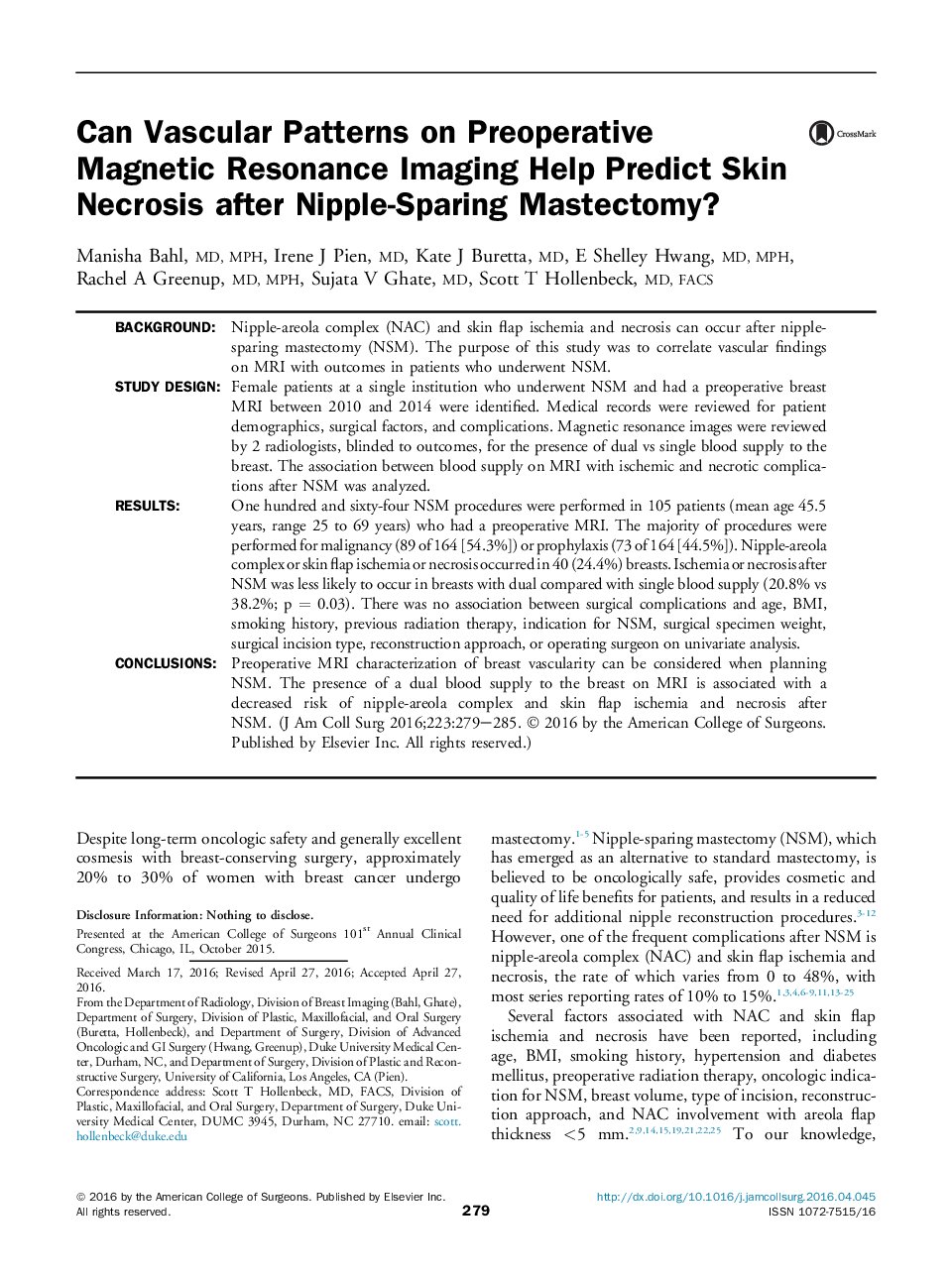| کد مقاله | کد نشریه | سال انتشار | مقاله انگلیسی | نسخه تمام متن |
|---|---|---|---|---|
| 6252417 | 1612203 | 2016 | 7 صفحه PDF | دانلود رایگان |

BackgroundNipple-areola complex (NAC) and skin flap ischemia and necrosis can occur after nipple-sparing mastectomy (NSM). The purpose of this study was to correlate vascular findings on MRI with outcomes in patients who underwent NSM.Study DesignFemale patients at a single institution who underwent NSM and had a preoperative breast MRI between 2010 and 2014 were identified. Medical records were reviewed for patient demographics, surgical factors, and complications. Magnetic resonance images were reviewed by 2 radiologists, blinded to outcomes, for the presence of dual vs single blood supply to the breast. The association between blood supply on MRI with ischemic and necrotic complications after NSM was analyzed.ResultsOne hundred and sixty-four NSM procedures were performed in 105 patients (mean age 45.5 years, range 25 to 69 years) who had a preoperative MRI. The majority of procedures were performed for malignancy (89 of 164 [54.3%]) or prophylaxis (73 of 164 [44.5%]). Nipple-areola complex or skin flap ischemia or necrosis occurred in 40 (24.4%) breasts. Ischemia or necrosis after NSM was less likely to occur in breasts with dual compared with single blood supply (20.8% vs 38.2%; p = 0.03). There was no association between surgical complications and age, BMI, smoking history, previous radiation therapy, indication for NSM, surgical specimen weight, surgical incision type, reconstruction approach, or operating surgeon on univariate analysis.ConclusionsPreoperative MRI characterization of breast vascularity can be considered when planning NSM. The presence of a dual blood supply to the breast on MRI is associated with a decreased risk of nipple-areola complex and skin flap ischemia and necrosis after NSM.
Journal: Journal of the American College of Surgeons - Volume 223, Issue 2, August 2016, Pages 279-285